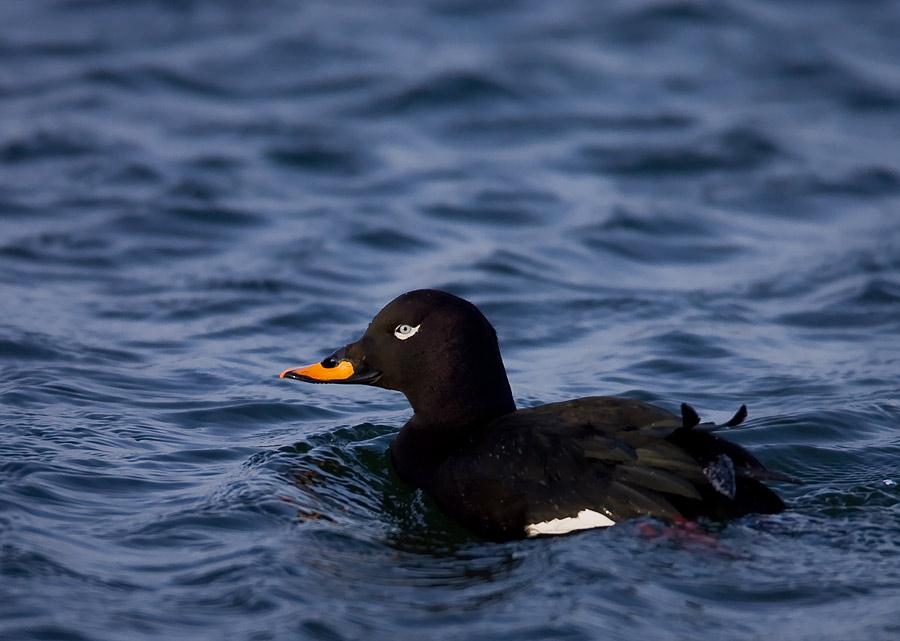
White-winged scoter(Melanitta deglandi)
Phylum —chordata
Class — aves
Order — anseriformes
Family — anatidae
Genus –melanitta
Appearance
The white-winged scoter characterized by its bulky shape and large bill. Females range from 950–1,950 g (2.09–4.30 lb) and 48–56 cm (19–22 in). They are brown with pale head patches. The male ranges from 1,360–2,128 g (2.998–4.691 lb) and from 53–60 cm (21–24 in). The white-winged scoter has a wingspan of 31.5 in (80 cm). He is all black, except for white around the eye and a white speculum.
Habitat
The white-winged scoter breeds over the far north of North America. It winters further south in temperate zones, on the Great Lakes, the coasts of the northern United States and the southern coasts of Canada.
Behavior
The white-winged scoter forms large flocks on suitable coastal waters. These are tightly packed, and the birds tend to take off together.
Diet
In freshwater, this species primarily feeds on crustaceans and insects; while in saltwater areas, it feeds on mollusks and crustaceans.
Reproduction
The lined nest is built on the ground close to the sea, lakes or rivers, in woodland or tundra. 5–11 eggs are laid. The pinkish eggs average 46.9 mm (1.85 in) in breadth, 68.2 mm (2.69 in) in length and 82.4 g (2.91 oz) in weight. The incubation period can range from 25 to 30 days. After about 21 days, neighboring females may start to behave aggressively towards other nesting females, resulting in confusion and mixing of broods. By the time she is done brooding, a female may be tending to as much as 40 offspring due to the mixing from these conflicts. The female will tend to her brood for up to 3 weeks and then abandon them, but the young will usually stay together from another 3 weeks. Flight capacity is thought to be gained at 63 to 77 days of age.
The maximum age that these birds can reach is still unknown, but in the wild they live on average for about 12 years.
In captivity
They are practically not amenable to breeding. In the International Zoo Yearbook, there is a report on chicks raised in 1960 at the Washington Zoo, and in 1972 at the Helsinki Zoo, without specifying whether the chicks were raised from eggs taken in nature or from eggs laid in captivity.
 Russian
Russian
 English
English
























